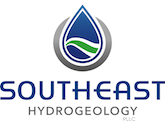Geographic information systems
Geographic Information Systems (GIS) is a powerful tool that Southeast Hydrogeology, PLLC uses for data management, visualization of spatial data, modeling, and analysis. 3D GIS capabilities allow effective assessment of subsurface conditions that takes our GIS capabilities beyond the traditional 2D approach and is especially applicable to the water resources sector. The powerful capabilities of GIS are integrated with our water resources, environmental consulting and well diagnostics services to provide better decision-making capabilities for our clients. Spatial data can be shared using cloud applications for ease of use by clients.
Spatial analysis of data is absolutely critical to assess issues such as contaminant migration in the subsurface, groundwater vulnerability mapping, water resources development and watershed management. Utility asset management is most efficient when all assets are properly located and categorized within a GIS system.
Southeast Hydrogeology, PLLC mainly utilizes open-source software for the majority of its GIS needs. We find the use of open-source software can match commercially available software on a feature-by-feature basis, while saving clients considerably on licensing fees. This can be a significant advantage for many small to medium size businesses and utility districts looking to stretch their budgets.
Southeast Hydrogeology, PLLC also provides training to allow clients to transition to open-source software as smoothly as possible.
Utility Asset Management
A key component of an effective utility asset management program is an inventory of the assets that must be tracked. This is ideally done through a GIS-based database management system. The GIS database will include spatial locations of assets, but will also include asset age, condition, replacement schedule. Such an asset management plan allows for development an efficient process for asset maintenance and replacement to maximize lifespan and reduce unnecessary costs.
Groundwater Vulnerability Mapping
GIS spatial analysis is the basis for groundwater vulnerability mapping. Various models such as EPIK for karst area and DRASTIC for non-karst areas identify and classify different factors to determine overall groundwater vulnerability across a designated area. The GIS-based vulnerability maps identify areas suitable for groundwater development or, conversely, areas which may require more water quality monitoring.
3D GIS
While traditional GIS focuses on locating surface points in terms of an X-Y coordinate system, 3D GIS takes that one step beyond and adds in a Y coordinate in order to include subsurface features such as well logs, geologic cross sections, aquifer data, and occurrence of groundwater contaminants. This allows a correlation of subsurface features to allow better siting of wells and determine geologic sources of contaminants such as arsenic and nitrates.
Services Include
- Georeferenced mapping to support projects
- Analysis of remote sensing data
- Utility asset management programs
